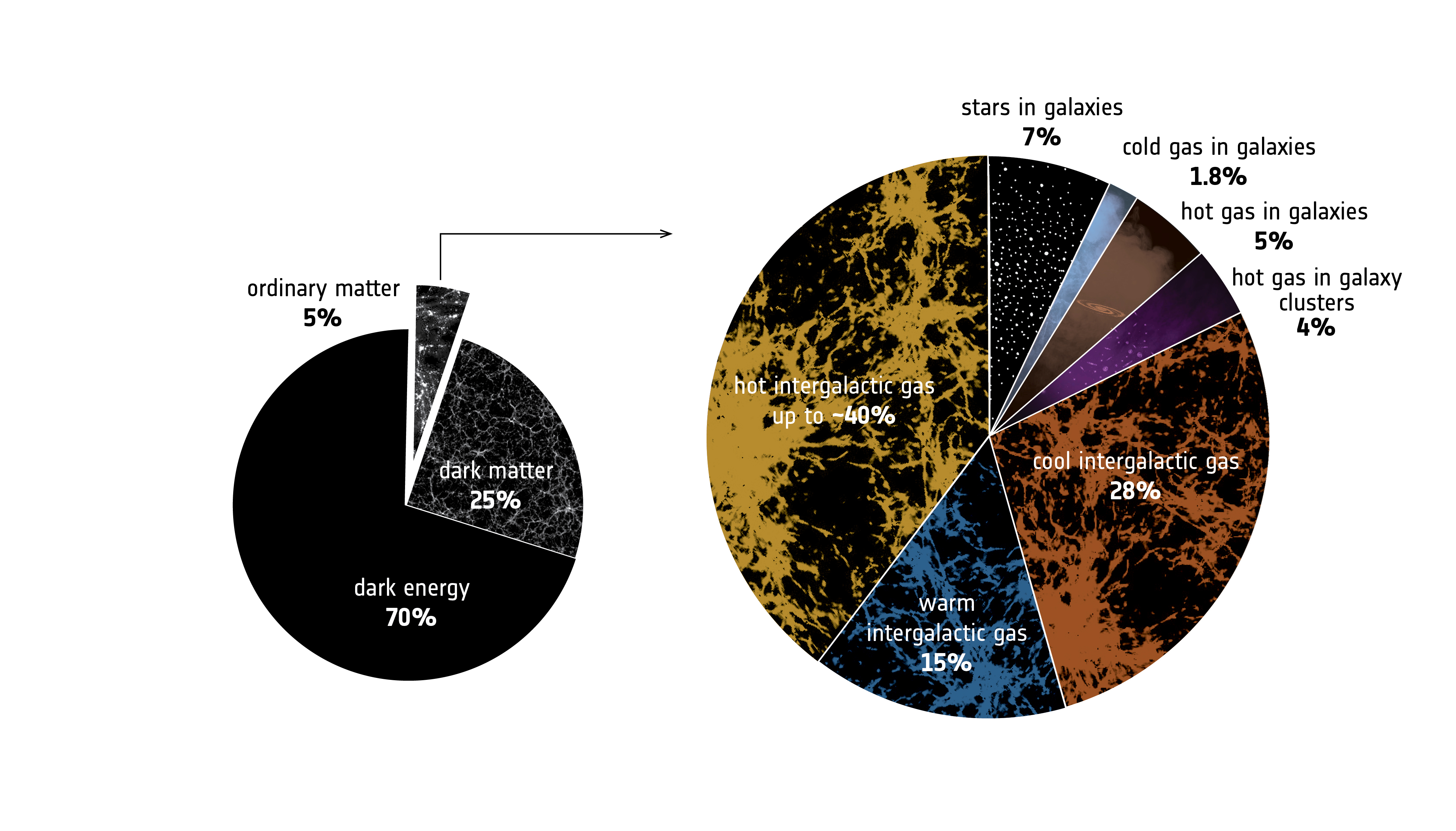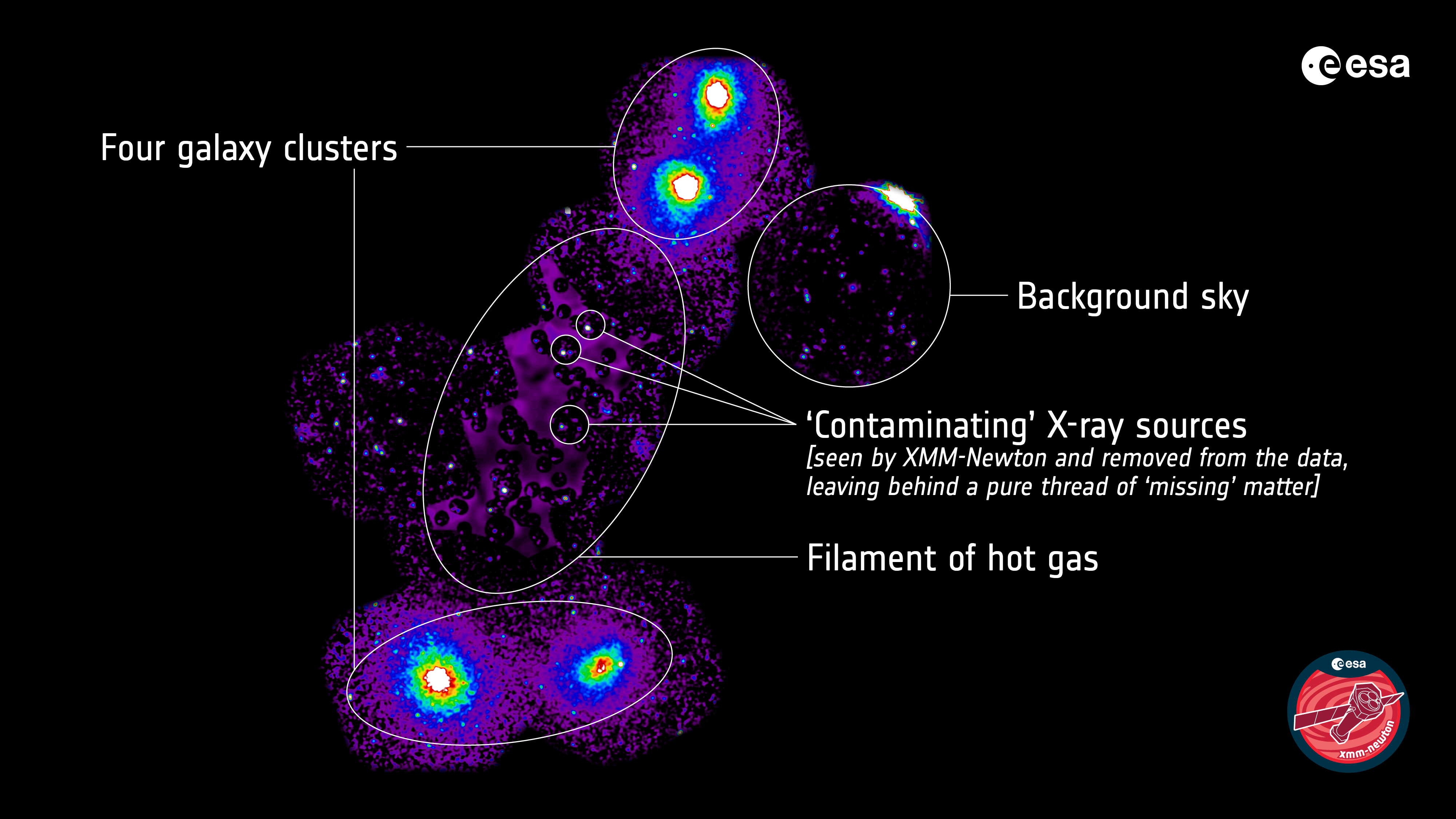The regular matter that makes us, planets, stars, and galaxies is about 5 percent of the matter-energy content of the universe. The rest is made of dark matter and dark energy, though we are not sure what they are. There is also uncertainty around the regular matter, since for a long time over one-third of it was not accounted for. Models had suggested that it would exist in the space between galaxies, and different groups using wildly different methods have now confirmed that it really is there.
Nothing in astronomy is obvious or banal, especially at the beginning. Still, it is not hard to see why a bright star would be easier to find than a small dark planet. In the same vein, astronomers have been able to find an enormous number of galaxies shining brightly across cosmic distances, but catching the tenuous gas between them has proved to be an enormous challenge.
The latest approach has been to use Fast Radio Bursts (FRBs), powerful emissions of radio waves that last just a fraction of a second. The radio flashes are affected by this intergalactic gas; the frequencies of the signal get spread out, and this spreading out allowed researchers to estimate how much matter is out there.

All ordinary matter is now accounted for!
Image credit: ESA
FRBs have only been known about for around a decade and are mysterious in their own right. Some repeat, others don’t. Not all of them have been tracked to their source. And we do not have a complete understanding of how they are created. The study looked at 69 FRBs from known locations. The closest was 11.74 million light-years away, and it also included FRB 20230521B, which now holds its record for the most distant known: it came from about 9.1 billion light-years away.
“The FRBs shine through the fog of the intergalactic medium, and by precisely measuring how the light slows down, we can weigh that fog, even when it’s too faint to see,” Liam Connor, assistant professor at Harvard and lead author of the study (who performed much of the work while a research assistant professor working with assistant professor of astronomy Vikram Ravi at Caltech), said in a statement.
The FRB work was done in radio waves, but it was independently confirmed from a completely different part of the light spectrum: X-rays. This intergalactic gas is hot, millions of degrees hot, and this means it emits X-rays. But still it has such a low density, and X-ray observations are so difficult that it took two telescopes – the European Space Agency’s XMM-Newton and the Japanese Space Agency’s Suzaku X-ray space telescope – to actually measure it.
Suzaku can see the faint gas, and XMM-Newton can identify all the sources around and far behind that are part of it. Together they looked at the Shapley Supercluster. It has a total mass of more than 10 million billion times our Sun, and features over 8,000 galaxies in different clusters. It is the most massive structure within 1 billion light-years from Earth.

X-ray observations of the Shapley Supercluster and the filament inside it.
Image credit: ESA/XMM-Newton and ISAS/JAXA
For the purpose of this work, it is not what we can see that is interesting but what is supposed to be there. Connecting the two extremes of the supercluster, there should be a filament spanning 23 million light-years. That’s 230 times the size of our galaxy from side to side. The two telescopes were able to measure the amount of gas in the filament, which matches predictions.
“For the first time, our results closely match what we see in our leading model of the cosmos – something that’s not happened before,” lead researcher Konstantinos Migkas of Leiden Observatory in the Netherlands, said in a statement. “It seems that the simulations were right all along.”
Galaxies are not randomly distributed in the universe. They are organized in the cosmic web, a vast network of galaxies, gas, and clusters of galaxies that connect the structures in the universe. Knowing where all the matter is allows us to better understand what that is like, how it formed, and how it will evolve.
The paper using FRBs to find the missing matter was published in Nature Astronomy. The estimate of this matter in the filament within the Shapley Supercluster was published in Astronomy & Astrophysics.
Source Link: Missing 40 Percent Of Matter In The Universe Finally Discovered: “The Simulations Were Right All Along”